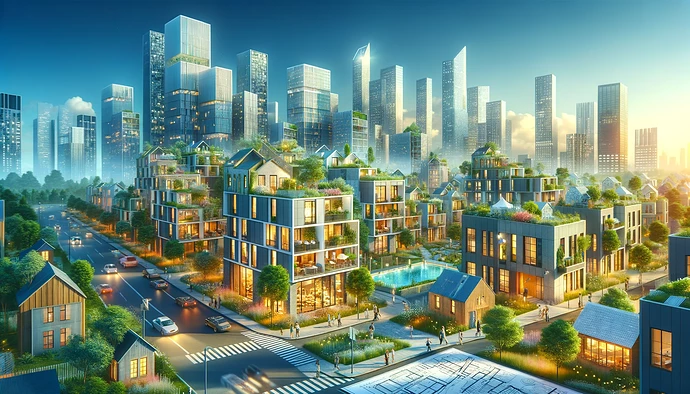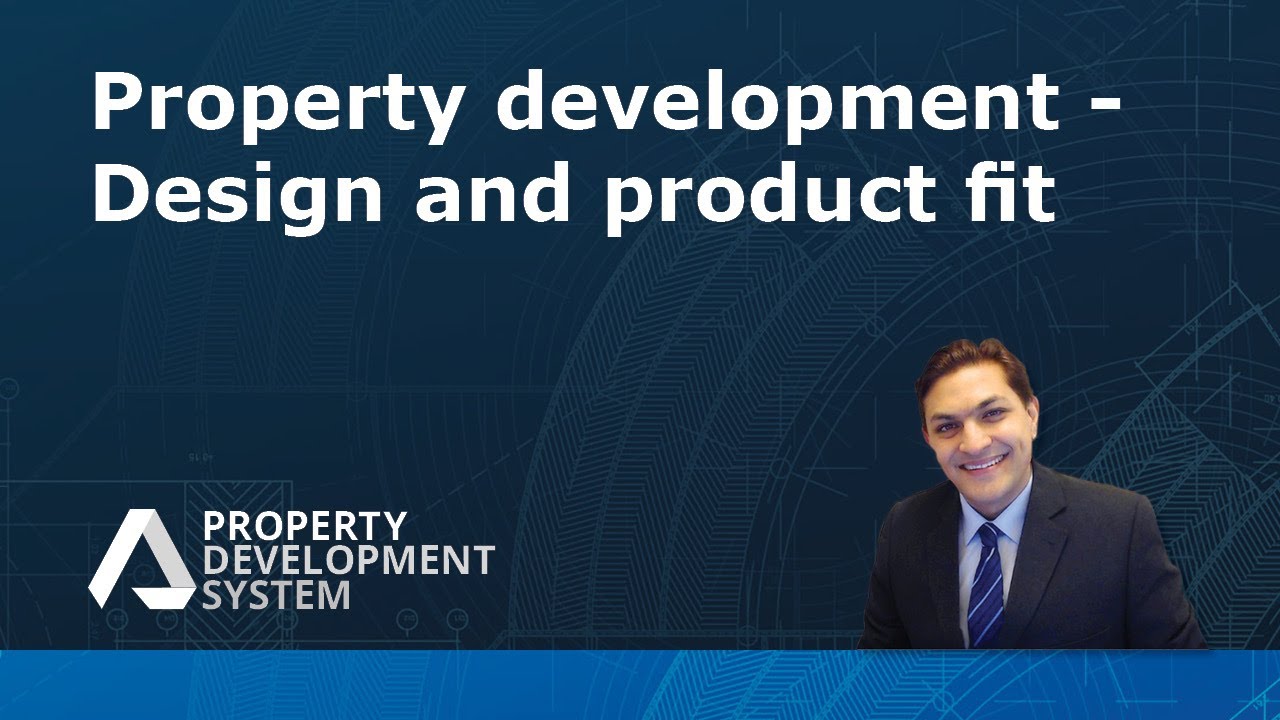Design and Product Fit
Design & Product Fit
Design and Product Fit
Here is an in-depth look at key considerations for successful property development, focusing on the critical aspects of product fit, environmental sustainability, and cost-effective design.
It guides you through the importance of market research, demographic analysis, and strategic planning to ensure the viability and profitability of property projects.
Product Fit
Emphasizes the importance of due diligence and market research in determining what is in demand, such as the preference for two or three bedrooms, and whether the target market is investors or owner-occupiers.
Demographics
Consider the local population’s characteristics, whether they are downsizing or moving from more expensive areas, affecting the type of developments suitable for the area.
Demand and Supply
Highlights the need to analyze the balance between apartments and townhouses and the sizes that are most in demand.
Development Pipeline
Advises on the importance of understanding the timeline from property acquisition to market, including checking council websites for existing applications to avoid market saturation.
Frequently Asked Questions
Why is product fit important in property development?
Product fit is essential in property development as it ensures that the properties being developed meet the current market demand. It involves conducting due diligence and market research to determine what potential buyers or renters are looking for, such as the number of bedrooms or whether the target market consists of investors or owner-occupiers.
How does demographic analysis contribute to property development?
Demographic analysis helps developers understand the local population’s characteristics, such as whether they are downsizing, moving from more expensive areas, or have specific needs. This understanding helps in planning the type of developments that are suitable for the area, ensuring that the new properties meet the expectations and needs of the target demographic.
What is the significance of analyzing demand and supply in property development?
Analyzing the balance between demand and supply is crucial for property development because it helps identify what types of properties (apartments or townhouses) and sizes are most in demand in a particular area. This analysis prevents the oversupply of certain types of properties and ensures that developers are investing in projects with high demand.
Why is understanding the development pipeline important?
Understanding the development pipeline, which includes the timeline from property acquisition to market, is important for several reasons. It helps developers anticipate market saturation by checking for existing applications on council websites and planning their projects accordingly to avoid entering an oversupplied market.
What insights can be gained from comparing two-bedroom units to three-bedroom ones?
Comparing two-bedroom units to three-bedroom ones provides specific insights into market demand nuances. For example, it can reveal which type of unit is more in demand in a particular area, informing developers about the most viable projects to pursue in terms of size and type of dwelling.
Test Your Knowledge
Multiple-Choice Questions on Property Development: Design and Product Fit
1. Why is product fit considered crucial in property development?
A) To ensure properties have unique designs
B) To match property developments with current market demands
C) To reduce the environmental impact of property development
D) To increase the speed of construction
2. What role does demographic analysis play in property development?
A) It helps in selecting construction materials
B) It assists in determining the marketing budget
C) It aids in understanding local population characteristics to plan suitable developments
D) It is used to choose interior design styles
3. How does analyzing demand and supply benefit property development?
A) By facilitating the choice of construction companies
B) By determining the best locations for new developments
C) By identifying what property types and sizes are in demand
D) By predicting future real estate market trends
4. What is the importance of understanding the development pipeline in property development?
A) It ensures properties are environmentally sustainable
B) It helps developers avoid entering an oversupplied market
C) It is crucial for choosing the right architectural style
D) It allows for the creation of cost-effective designs
5. What insights can developers gain from comparing two-bedroom units to three-bedroom ones?
A) The preferred architectural styles
B) The most effective marketing strategies
C) Specific market demand nuances for different unit sizes
D) The best practices for sustainable development
6. Which of the following best describes the purpose of market research in ensuring product fit in property development?
A) To establish a brand identity for the development company
B) To identify potential legal challenges in development
C) To determine the preferences and needs of the target market
D) To find the most cost-effective construction methods
7. Why might a developer conduct demographic analysis before starting a new project?
A) To forecast future interest rates
B) To understand the needs and expectations of the target demographic
C) To decide on the property management company
D) To select the types of plants for landscaping
Answers:
- B) To match property developments with current market demands
- C) It aids in understanding local population characteristics to plan suitable developments
- C) By identifying what property types and sizes are in demand
- B) It helps developers avoid entering an oversupplied market
- C) Specific market demand nuances for different unit sizes
- C) To determine the preferences and needs of the target market
- B) To understand the needs and expectations of the target demographic
Assignment
Practical Exercise on Property Development: Design and Product Fit
Objective
This assignment is designed to deepen your understanding of property development, with a focus on product fit, environmental sustainability, and cost-effective design. Through a series of questions, research tasks, and practical exercises, you will apply the concepts of market research, demographic analysis, demand and supply analysis, and development pipeline understanding to a hypothetical property development project.
Part 1: Understanding and Application
1. Market Research:
To Do: Choose a specific geographical area for your hypothetical property development project. Conduct a brief market research to identify the current housing trends in the area. Include types of dwellings most in demand (e.g., apartments, townhouses) and preferred sizes (e.g., two or three bedrooms).
Research Question: What are the current housing preferences and trends in your chosen area? Present your findings.
2. Demographic Analysis:
To Do: Based on the area selected, analyze the demographics. Identify whether the population is predominantly downsizing, moving from more expensive areas, young professionals, families, etc.
Research Question: How do the demographics of your chosen area influence the type of housing developments that would be suitable?
3. Demand and Supply:
To Do: Analyze the balance between supply and demand for your selected type of property in the chosen area. Consider checking local real estate listings, housing reports, and demographic data.
Research Question: Is there a gap in the market for your chosen type of dwelling in the area? What is the competition like?
Part 2: Development Pipeline Analysis
4. Development Pipeline Insight:
To Do: Investigate the local council’s website for any existing or upcoming property development applications in your chosen area. Note the types of developments that are being planned or are under construction.
Research Question: Based on your findings, what considerations should you make to avoid market saturation with your proposed development?
Part 3: Practical Design Task
5. Designing for Product Fit:
To Do: Create a brief proposal for a property development project that aligns with your market research, demographic analysis, and demand and supply findings. Your proposal should detail:
- The type and size of the development (e.g., two-bedroom townhouses).
- Key design features that cater to the target market’s preferences and needs.
- Any sustainable design practices you would incorporate to ensure environmental sustainability.
Research Question: How does your proposed development address the market needs and demographic characteristics of your chosen area?
Part 4: Reflection
6. Reflective Analysis:
To Do: Reflect on the process of conducting this exercise. Discuss the challenges you faced during the market research, demographic analysis, and the development pipeline investigation.
Research Question: How did the information gathered influence your proposal? Discuss any adjustments you had to make to your original concept to better fit the market demands and demographic needs.
Submission Guidelines:
- Compile your findings, proposal, and reflective analysis into a comprehensive report.
- Ensure your report is well-organized, with clear headings for each part of the assignment.
- Include any references or sources you used for your research.



